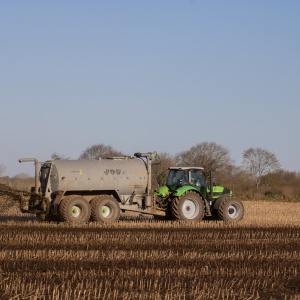
The number of people in the world that could theoretically be fed depends on how much food can be produced, as well as factors such as dietary composition (particularly the balance between crop and animal products) and what agricultural land is used for which purpose (cropping versus grazing). The potential for agricultural production is itself critically dependent on nitrogen availability. Nitrogen can be delivered in the form of mineral or organic fertiliser. While nitrogen is an essential input into agricultural production, nitrogen pollution is a major problem, with the degree of pollution caused a function of the quantity of nitrogen produced as well as the efficiency of its uptake and use by crops ( these will be influenced by climatic and other biophysical factors) - the Nitrogen Use Efficiency (NUE).
To better understand the theoretical ‘global feeding capacity’ of existing agricultural land (cropland and grassland) using protein as a measure, the authors of this study developed a model which simulated a variety of production scenarios, 5 in all.
Three of these (named B1-3) assumed ‘industrial fertilisation’ (i.e. the use of mineral fertilisers) and two - B4 and B5 - assumed ‘organic fertilisation’ via biological nitrogen fixation, green manures and livestock manure.
Variants explored in the scenarios modelled included differing assumptions about: nitrogen use efficiency, the allocation of land between arable and grassland (but doesn’t model the implications of land use change for soil carbon), the amount of livestock produced/animal products consumed and the extent to which animals were fed crops suitable for human consumption or were grazed on grassland/fed residues (i.e. the feed-food competition issue). Current global trade patterns were assumed.
Under these scenarios the model suggested that the current agricultural area could provide protein for ~8–20 billion people under industrial fertilisation and ~3–14 billion under organic fertilisation. Current UN population projections for the end of the century range from between just under 9 billion to nearly 15 billion people.
In all scenarios agricultural production based on zero feed-food competition can potentially feed the greatest number of people; this is not synonymous with a vegan scenario, since some food is obtained from rearing livestock on grasslands unsuited to cropping and on food residues. In the industrial fertiliser scenarios, the diet that maximizes the feeding capacity (~20 billion people) contains, on average, 15% animal proteins (as a proportion of total protein intakes) compared with 35% today as the global average and 55% in affluent countries. In the organic B5 scenario, the global feeding capacity maximizes with ~20% animal proteins in the diet at 13.90 billion people. In B4, which assumes lower nitrogen use efficiency in crop production and therefore lower yields than B5, the minimum share of animal proteins in the diet is 35% (animals are needed for nutrient recycling), and the maximum population that could be fed is 7.4 billion. Assuming vegan diets (that is, no consumption of animal proteins), the feeding capacity falls to 17.4 billion people in B1–B3, which is 11% below the estimated maximum of 20 billion and to 6.6 billion in the B5 organic scenario (the one which assumes improved NUE on today’s levels).
For all scenarios the capacity of agriculture to feed the human population will be contingent on nitrogen use efficiency, making this a key priority. Decreasing livestock production and integrating cropping and livestock systems will be essential elements of improving NUE and addressing sustainability challenges.
Paper abstract
Harvested food carries a fraction of the nitrogen applied through fertilization; the remainder is typically lost into the environment, impairing planetary sustainability. Using a global agriculture model that integrates key drivers of food production and nitrogen cycling, we simulated upper bounds to global feeding capacity—and associated nitrogen pollution—as a function of nitrogen limitation under organic and industrial fertilization regimes. We found that the current agricultural area could feed ~8–20 billion people under unconstrained industrial fertilization and ca. 3–14 billion under organic fertilization. These ranges are inversely correlated with animal proteins in human diets, and are a function of feed–food competition, grassland-to-cropland allocation and—in the case of organic fertilization—nitrogen use efficiency. Improved nitrogen use efficiency is required to bring nitrogen pollution within planetary sustainability limits and is also essential in narrowing down food productivity gaps between organic and industrial fertilization regimes.
Reference
Chatzimpiros, P., and Harchaoui, S., 2023. Sevenfold variation in global feeding capacity depends on diets, land use and nitrogen management. Nature Food, pp.1-12.
Read the full paper here. See also the TABLE Explainer What is the land sparing-sharing continuum? which explores the use of land for agriculture.







Post a new comment »